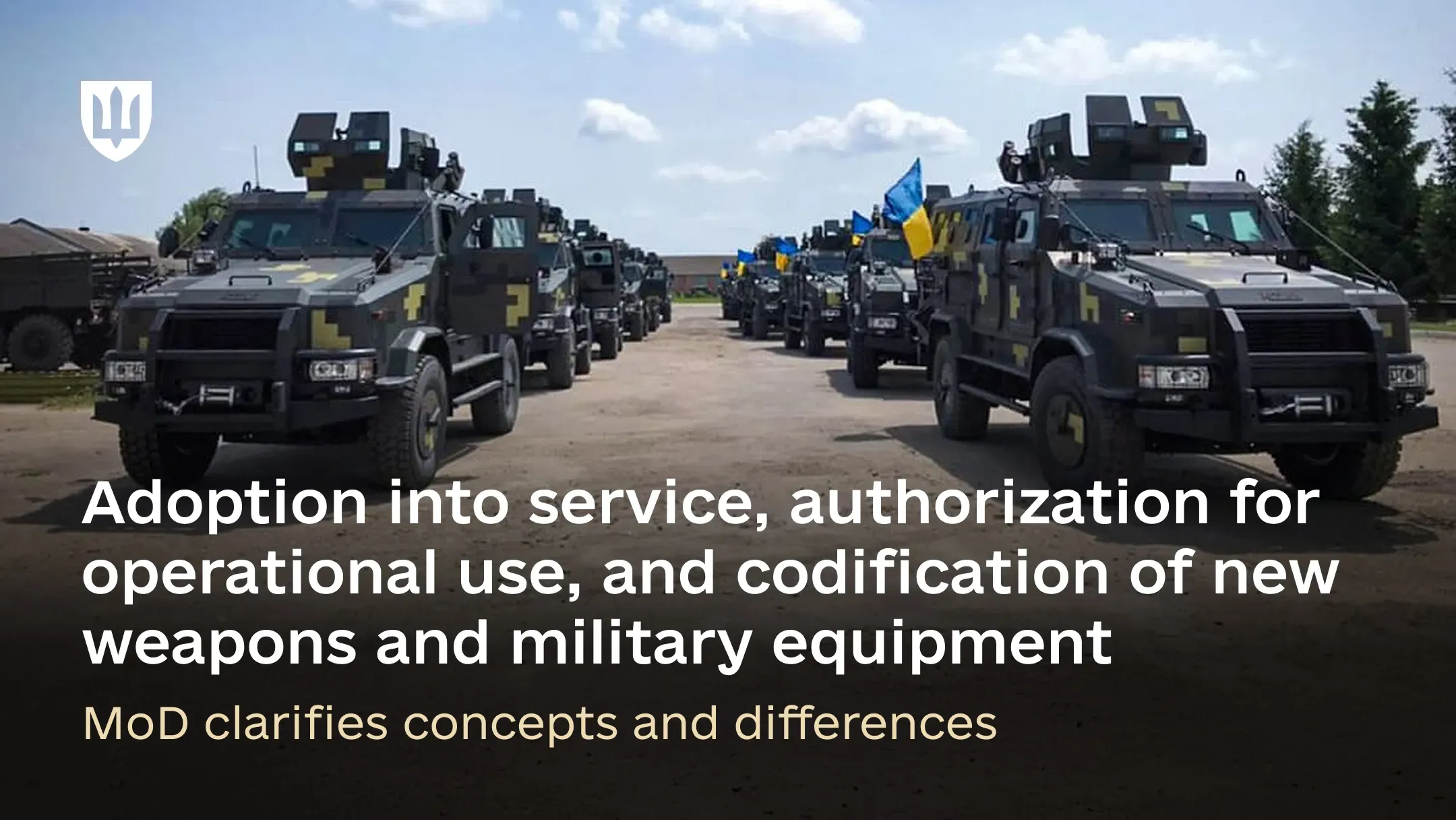Adoption into service, authorization for operational use, and codification of new weapons and military equipment: The Ministry of Defence clarifies concepts and differences

The Main Directorate for Support of the Life Cycle of Weapons and Military Equipment has clarified the distinctions between the concepts and procedures for adopting new models of weapons and military equipment (WME) into service (supply), authorizing their operational use, and the role of codification in both processes.
Under current Ukrainian legislation, two primary pathways exist for introducing weapons and military equipment (WME) models into operational use within the Armed Forces of Ukraine: adoption into service (supply) and authorization for operational use. Each of these processes has its own distinct characteristics and is applied based on specific circumstances.
Codification, meanwhile, represents the conclusive stage in developing, creating, and testing a new WME model prior to its authorization for operational use or adoption into service. It serves as a tool for identifying the item as a WME model eligible for procurement by the defense agency and for managing its nomenclature thereafter.
Adoption into service (supply) is a procedure encompassing the full cycle of development, testing, and trials to ensure compliance of a WME model’s tactical, technical, and other specifications with the technical specifications issued by the state customer. In simpler terms, this process involves creating a new model from scratch at the request of the defense agency through research and development carried out by the executing organization. Developing a new WME model involves multiple stages of testing, culminating in state trials. The final stage consists of state trials, based on which a decision is made regarding the model’s compliance with the state customer’s requirements. If the outcome is positive, the Ministry of Defence issues an order for the model’s adoption into service (supply) within the Armed Forces of Ukraine. It should be noted that this process is more typical of peacetime, as the development, testing, and final adoption of a new model of domestically produced WME can take years.
The authorization for operational use of a new WME model applies when it is necessary to rapidly supply the military with new weapons and military equipment during a special period. This procedure allows for more rapid deployment of weapons and equipment models that have not yet completed the full cycle of legally required tests but have officially confirmed compliance with their declared tactical and technical specifications under current legislation.
To illustrate the specifics of both procedures, consider the example of a rifle. Under the regulations applicable to the adoption into service of a rifle, where the state commissions a company for its development, the process of verifying compliance with the stated tactical and technical specifications can be time-consuming. To be more specific, if the customer requires the rifle’s barrel to withstand at least 10,000 shots, a series of tests must be conducted under maximum stress conditions: varying firing rates, extreme temperatures (heat, cold), contaminated environments, etc. That is, the new model undergoes a rigorous examination of its technical durability. If the model fails to meet requirements, the developer must refine it, with a subsequent test phase to verify corrections. Consequently, the timeline from the start of the development to adoption into service can be lengthy.
During a special period when new weapons must be delivered to the frontlines as quickly as possible, the current legislation permits authorization for operational use of a new model based on the developer’s test results. If these results confirm the WME model’s compliance with its stated tactical and technical specifications, the item is authorized for operational use in the military.
The authorization for operational use of new WME models is currently governed by a series of regulatory acts approved by relevant Resolutions of the Cabinet of Ministers of Ukraine.
Codification is the process of designating a manufactured item as an item of supply and organizing its associated information. During the codification process of a WME model, the manufacturer’s information, technical documentation specifying the model’s specifications, completeness, and other relevant data are recorded. Subsequently, the new WME model undergoes classification, its supply item name is determined per the Nomenclature Directory, and its specifications are outlined based on the identification manual. This data is added to the Catalog of Supply Items, and a NATO nomenclature number is assigned. Following this, the Ministry of Defence or other Security and Defense Forces entities can officially procure the model using state budget funds.
In 2023–2024, the codification process for WME models was significantly streamlined. The required timeframe was first reduced to 20 days, and later to 10 days. Previously, this procedure took several months.
In summary: During peacetime, new models of WME are introduced into the military after completing a full testing cycle and issuing an order for their adoption. In contrast, during a special period, a simplified procedure for authorizing operational use allows for the rapid provision of necessary new WME models to the military.